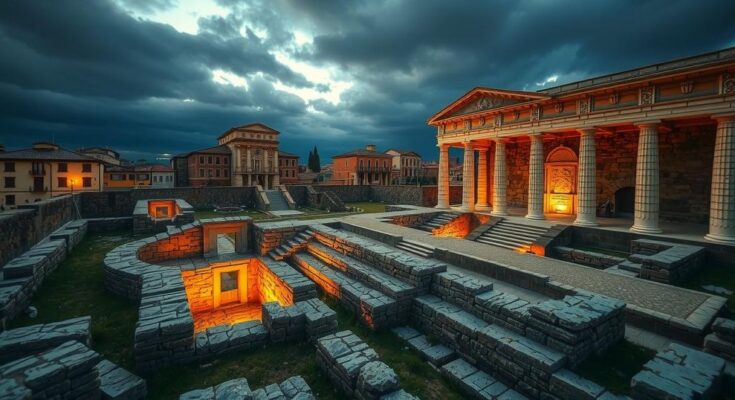A study suggests that earthquakes, alongside the eruption of Mount Vesuvius, significantly increased the death toll in Pompeii. Evidence shows that people sought shelter indoors, where they were ultimately trapped by collapsing buildings due to seismic activity. Archaeological findings support the idea that survivors faced devastating choices during this disaster.
The catastrophic eruption of Mount Vesuvius in A.D. 79 not only buried the cities of Pompeii and Herculaneum under ash but also likely resulted in a higher death toll due to concurrent earthquakes. A recent study published in Frontiers in Earth Science emphasizes that seismic activity during the eruption might have led to falling buildings, further endangering those who sought refuge indoors. Historical accounts, such as those by Pliny the Younger, support the occurrence of significant ground tremors felt by survivors. Recent archaeological excavations have revealed the remains of two men with multiple fractures in a house characterized by ongoing renovations, suggesting they initially survived the eruption’s ash but fell victim to collapsing structures. This combination of volcanic devastation and seismic shocks paints a grim picture of the disaster, refuting the earlier notion that only the vulnerable populations, like the elderly and ill, suffered.
The eruption of Mount Vesuvius is one of the most infamous natural disasters in ancient history, known for its suddenness and the devastation it wrought on nearby communities. Historical records indicate that the eruption produced not only ash and pyroclastic flows but also seismic events that could have exacerbated the destruction experienced by the cities of Pompeii and Herculaneum. The acknowledgment of earthquakes as a factor in the disaster is vital for understanding the full scope of the tragedy that unfolded nearly two millennia ago.
In conclusion, the tragedies at Pompeii and Herculaneum resulted from a combination of volcanic eruptions and seismic activity. The new evidence presents a revised understanding of the events that led to the loss of life, suggesting that residents were faced with impossible decisions during the eruption. This knowledge enriches our comprehension of the catastrophe and the experiences of those who lived through it, indicating that nature’s fury claimed victims from various walks of life, not just the most vulnerable.
Original Source: www.snexplores.org




